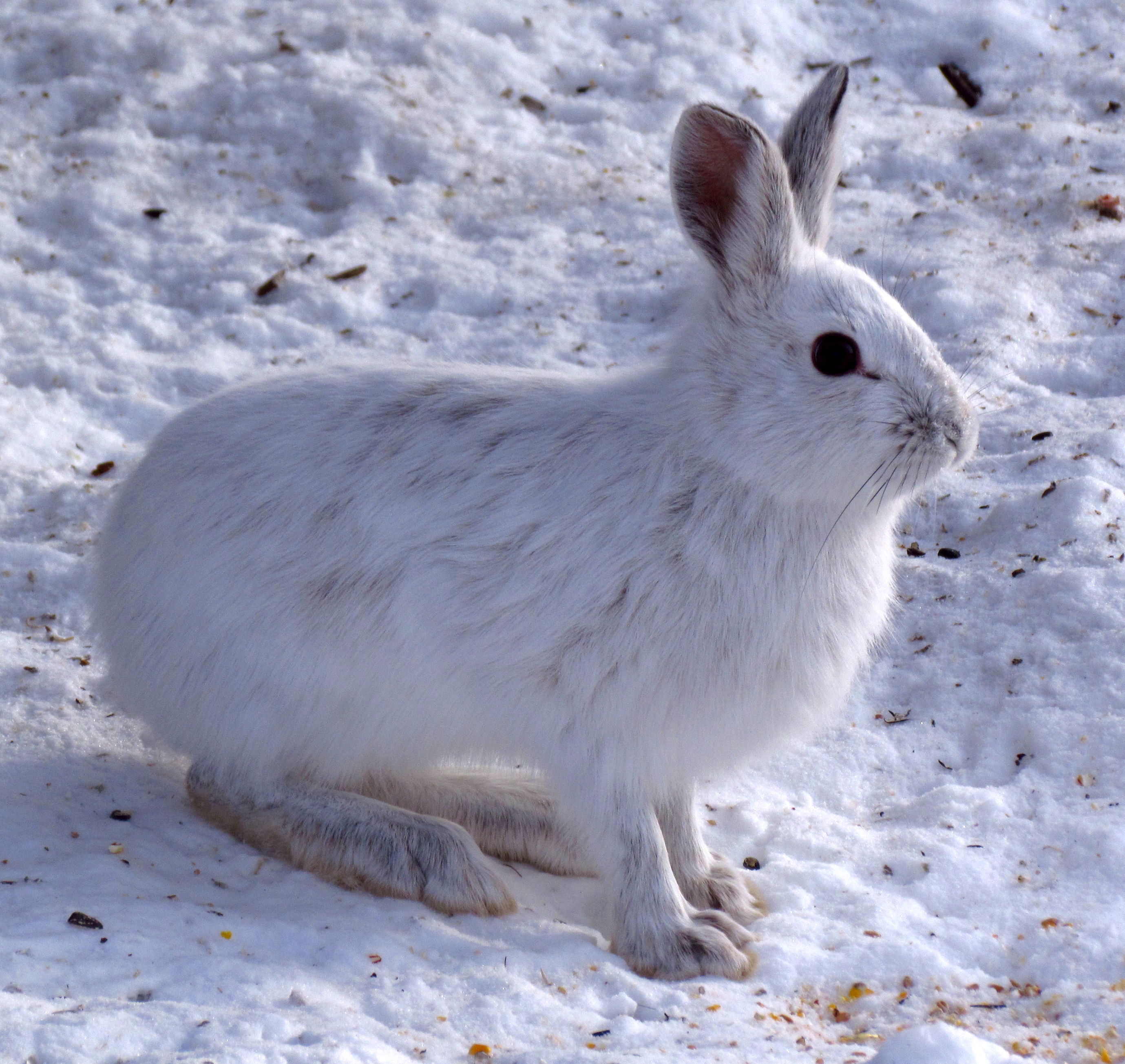There’s an old saying about the leopard not being able to change its spots. But snowshoe hares do it twice a year: replacing a thick white winter coat with a lighter brown summer coat.

European rabbits, which is what Noe is, don’t do this- she does shed twice a year, but her fur is the same color each time.

For hares, the timing of the coat replacements is roughly correlated with snowfall, and it’s easy to picture how a white coat helps camouflage them in winter and a brown one in summer. But there’s a problem: climate change means that seasons are shifting, so their white coats come in too soon and stay too long. This is a big problem for the hares: white makes them stand out to predators on a brown (or green) background.
In theory, natural selection will weigh heavily on hares in the years to come: the hares that have coat-changing cycles that more closely match snowfall will survive, while those with the older cycle will probably be eaten. Over time, the hare population will adapt to the new seasons. But there are two big IFs here: this will only happen IF the seasonal changes happen slowly enough so that the hares have time to adapt, and IF all the hares aren’t preyed upon faster than the survivors can have babies.
Because hares breed like…rabbits (sorry, couldn’t resist the cliche), they will probably be okay in the long term. But there are many, many other species for whom rapid climate change will create insurmountable problems in the decades to come.
For more on the story, go here: http://news.sciencemag.org/sciencenow/2013/04/color-changing-hare-cant-keep-up.html?ref=hp